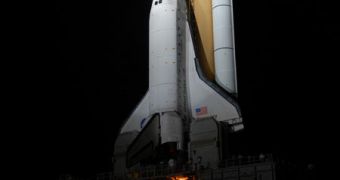At this point, NASA has only two space shuttle missions planned before it retires its aging orbiter fleet, but US President Barack Obama and Congress recently approved an additional spaceflight by Atlantis. Whether that will actually happen has not been decided yet.
“I told my team it was 50/50,” said in a recent press conference John Shannon, who is the Shuttle Program manager at NASA. The proposition still needs to pass a congressional appropriations hearing.
This uncertainty does not mean that NASA will not be ready to launch Atlantis again if the committee in charge of appropriations decided to sanction the plant to fly Atlantis to the International Space Station (ISS) one last time.
The last two approved spaceflights will be carried out by the space shuttle Discovery on November 1, and by Endeavor in February 2011. The future of the program beyond that is still up for grabs.
Atlantis is currently being prepped for another flight in any case. It is scheduled to act as a rescue mission for the crew of Endeavor, in case anything goes wrong during the orbiter's final flight.
Having orbiters on stand-by for possible rescue missions to low-Earth orbit (LEO) has become standard practice at the American space agency after the tragic loss of Columbia in 2003.
Even before Congress and Obama made their decision, officials at NASA expressed requests to have Atlantis fly again to the ISS. There are still large cargo to be ferried to LEO, and no other available spacecraft can carry them like the shuttles can.
“I have to point out how important that flight is to the [ISS]. From a logistics standpoint, I think 2012 is going to be a real challenge,” Shannon told reporters at the meeting.
NASA says that it costs around $200 million a month to keep the shuttle program alive, and so Atlantis' launch will depend entirely on whether the appropriations committee will decide to unblock the money.
“There's going to be a lot of discussions between now and the summer if we're going to fly 135 exactly where we're going to fly it. Does it make sense to delay a bit and get the ISS in better shape?” Shannon added, quoted by Space.
The official stressed that the six-astronaut crew living aboard the ISS needs a strong logistics support in order to keep carrying on with their mission, and that the lack of an additional shuttle flight would put a major dent in that chain.
In addition to the shuttles, Russian Soyuz and Progress capsules, the European ATV and the Japanese HTV are the only spacecrafts that can reach the ISS with cargo payloads, supply and experiments.
But a Progress capsule can carry only 2.5 tons of materials. The European and Japanese spacecrafts are larger, but nowhere near the storing capacity of a space shuttle.
“My operations guy said one shuttle flight is equivalent to roughly seven Progress flights. So, getting to fly [STS-]135 late is going to give the space station margin to keep six crew (members) up, to keep doing research,” the Shuttle Program manager argued.

 14 DAY TRIAL //
14 DAY TRIAL //